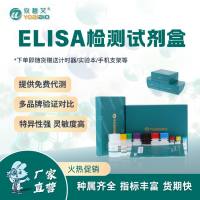C.elegans TOTAL RNA PREP
互联网
1. Collected animals can be stored as frozen pellets at -70 degrees. Alternatively, freshly collected animals can be quick frozen in liquid nitrogen. Prechill a mortar and pestle with liquid nitrogen. Place frozen animals dlrectly into liquid nitrogen in the mortar and grind to a powder, adding more liquid nitrogen as necessary in order to prevent thawing.
2. Transfer the ground, frozen worm powder directly into a Corning tube containing the appropriate volume of lysis buffer (I generally use 4 times the volume of packed worms). The solution will instantly freeze to a slurry, but this soon thaws in the 65 degree incubation. Incubate the suspension at 65 degrees for 30-60 minutes. It should become reasonably clear.
Lysis buffer:
-
1 ml 0.5 M EDTA
2 ml 1 M Tris, pH 7.5
4 ml 20% SDS
water to 40 ml
add 100 ul 20 mg/ml proteinase K (stock in TE, stored frozen in
aliquots at -20 degrees; the stuff I've been using is high
grade from Merck - you want highly purifed in order to avoid
RNase contamination)
3. Phenol extract extensively. I usually back extract the first interface with 1-2 ml of lysis buffer, and combine the aqueous phase from this with that from the first extraction for all subsequent extractions. " Extensively" = at least 4-5 extractions. There should be very little interface by the last one. Then do a couple of chloroform extractions for good measure. (Thorough extraction is a critical step in this protocol - the times I've gotten degradation of the RNA have been when I've cut corners here.)
4. Add LiCl to a final concentration of 2 M (from a 10 M stock solution). Incubate on ice 2-3 hours (longer is OK) or overnight at 4 degrees. (LiCl precipitates RNA, leaves DNA behind.)
5. Spin down. A variety of centrifugations will work: SW55 in the ultracentrifuge, 30 k rpm for 15 min. at 4 degrees (this is overkill); JA20, 8 k rpm for 20-30 min.; Eppendorf for 15 -20 min.; etc.
6. Resuspend the RNA pellet in 1-3 ml of TES (TES = 10 mM Tris 7.5, 1 mM EDTA, 0.1-0.2% SDS). Choose the volume based on how much RNA you have; LiCl precipitations seem to not work very well when the RNA concentration falls below some threshold, so keep the volume as small as is reasonable for getting your pellet resuspended. The pellets can be quite difficult to resuspend, and sometimes I resort to short incubations at 65 degrees to speed the process, though this always makes me nervous about lurking RNases.
7. Add LiCl to 2 M and repeat the precipitation.
8. Repeat the LiCl precipitation a third time.
9. Resuspend the RNA in TES. Phenol extract (just an insurance measure against any stray RNase that may have wandered in during the preceding manipulations). Ethanol precipitate. Wash the pellet 2 times with 70% ethanol. Dry and resuspend in the desired volume of TES or TE or water, depending on what you want to use the RNA for. Store at -20 degrees. TES is best if all you're going to do is run Northerns - the SDS is a partial insurance against RNase. But as SDS is incompatible with most enzymatic recations, if you're going to be making cDNA, etc., you'll not want to use TES. If you've done a good job on the purification, your RNA will be stable at -20 without the SDS.
Ann Sluder









